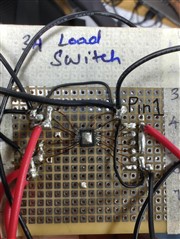Other Parts Discussed in Thread: TPS2H160EVM, TPS1HTC30-Q1,
Hi team,
When testing the load switch, we observed the following behaviors under different conditions:
- EN Pin HIGH or LOW:
- When the EN pin is set to HIGH, the switch behaves as expected, allowing current to flow.
- When the EN pin is set to LOW, the switch also behaves as expected, preventing current flow.
- EN Pin LOW and DIAG_EN Pin HIGH:
- When the EN pin is LOW and the DIAG_EN (Diagnostic Enable) pin is HIGH, the switch unexpectedly allows current to flow, providing an output. This is not the desired behavior.
It appears that the DIAG_EN pin is functioning as a default enable pin, overriding the state of the EN pin under certain conditions. This behavior was not anticipated based on the standard operation mode described in the documentation.
| case1 | ENABLE | 0 | 0V |
| LATCH | 0 | ||
| FAULT | 0 | ||
| DIAG_EN | 0 | ||
| case2 | ENABLE | 1 | 8V |
| LATCH | 0 | ||
| FAULT | 0 | ||
| DIAG_EN | 0 | ||
| case3 | ENABLE | 0 | 8V |
| LATCH | 0 | ||
| FAULT | 0 | ||
| DIAG_EN | 1 | ||
| case4 | ENABLE | 0 | 8V |
| LATCH | 1 | ||
| FAULT | 1 | ||
| DIAG_EN | 1 |
This condition completely contradicts of what we desired to use this in our case.



